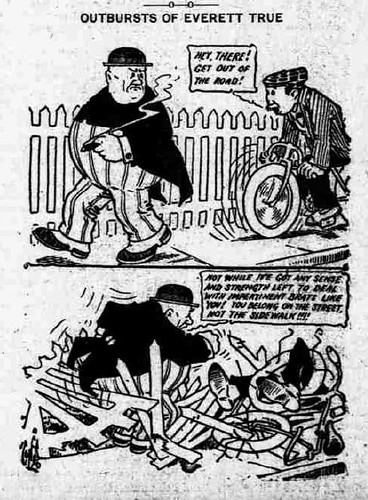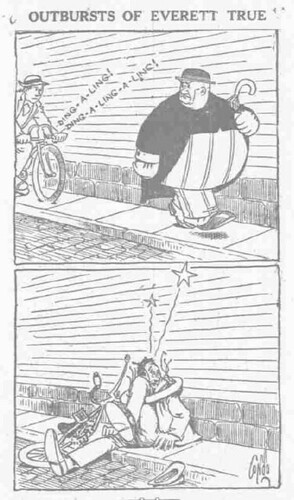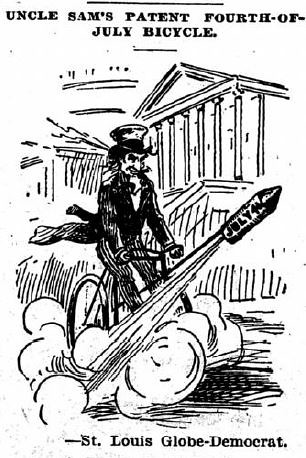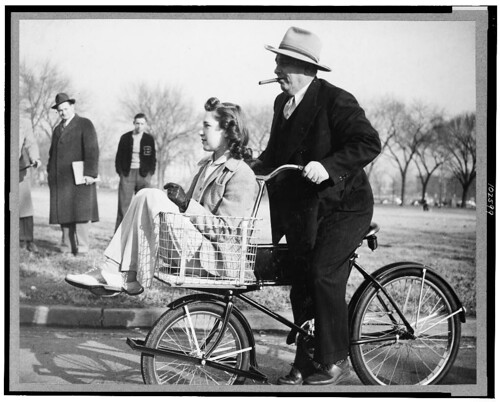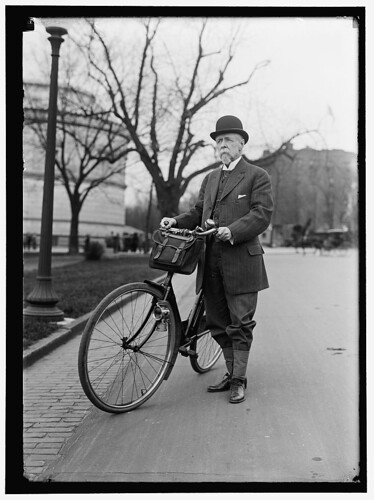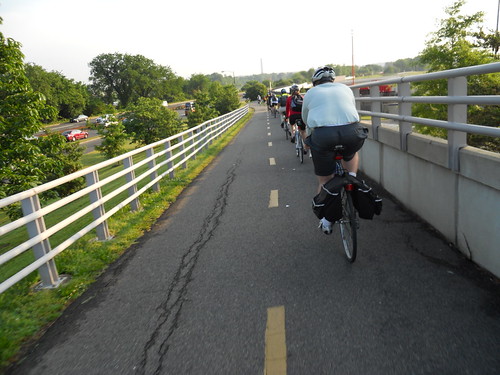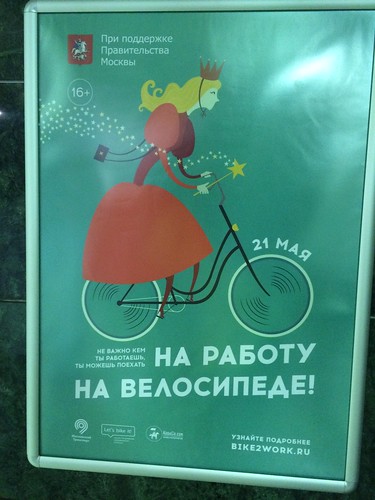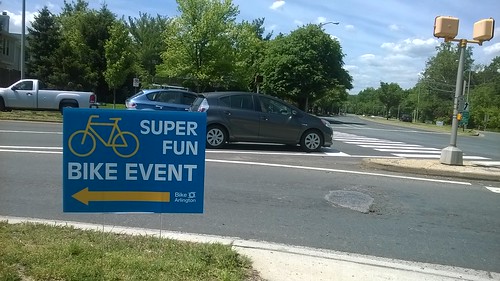About this Item:
Title-Eliza Jane.
Created / Published-Boston, Massachusetts, c1895, monographic.
Genre-song sheet
Repository-American Song Sheets Library of Congress Rare Books and Special Collections
ELIZA JANE
Complete Song, Words and Music, 40 Cents.
I. Eliza Jane she had a wheel, its rim was painted red;
Eliza had another wheel that turned inside her head.
She put the two together, she gave them both a whirl,
And now she rides the Parkway sides a Twentieth Century Girl.
REFRAIN.
"Oh, have you seen Eliza Jane a-cycling in the park?
"Oh, have you seen Eliza Jane?" The people all remark.
They shout "Hi! hi!" as she rides by; the little doggies bark,
For we all have a pain when Eliza Jane goes cycling in the park.
II. No more do skirts enfold her, tho' much her papa grieves,
But baggy trousers hold her in their big pneumatic sleeves;
For where you see the bloomers bloom she sits her wheel astride;
She makes a sight would stop a fight as in the park she rides.
Oh, have you seen, etc.
III. This is emancipation year, the woman movement's on;
Eliza plans to be a man, 'tis sad to think upon.
She thinks she needs the ballot now her freedom to enhance,
She wants to pose in papa's clothes; it is for this she pants.
Oh, have you seen, etc.
IV. Eliza had a nice young man, (Alas! 'twas long ago.)
As gay and fair, as debonair, as any man you know;
He saw her ride in bloomers, he screamed and quickly fled,
And as he ran, this nice young man in trembling accents said:
Ooooh, have you seen, etc.
V. Eliza's ma no longer speaks unto Eliza Jane,
She claims that dime museum freaks give her a sense of pain.
Her dad no longer cashes checks but wanders in the streets,
And thus he cries, in sad surprise, to everyone he meets:
Oh, have you seen, etc.
VI. Eliza's brothers saw her ride, and each one took to drink:
They made it flow to drown their woe, so that they need not think;
But there are woes that will not drown, not even in a well,
And in the worst of their great thirst Eliza hears them yell:
( Hic ), Wow! Have you seen, etc.
VII. Eliza to her tailor went, to try her bloomers on;
She came out from the dressing room and said with angry frown:
"These blooming bloomers do not fit!" The tailor said, Oh, law!
Excuse me, lady, but you've got them on hind-side before!"
Oh, have you seen, etc.
VIII. Eliza Jane has learned to swear since she became a man,
And when she finds it suits her mind she says her little—Rats!
It isn't very often that she feels that swear she must,
But she says it and she means it when her little tire's bust.
Oh, have you seen, etc.
IX. No more upon her red rimmed wheel the fair Eliza flirts,
No more she rides the Parkway sides in bi-fur-ca-ted skirts;
A park policeman ran her in one day in early Spring,
Because he thought Eliza taught the little birds to sing:
Oh, have you seen, etc.
X. Eliza dear, we sadly fear you have not started right;
You will not see more liberty by being such a fright;
Asylums yawn for you, my dear, and in the books we read,
How bloomers that too early bloom soon fade and go to seed.
Oh, have you seen, etc.
From Songs of Suffrage where it explains:
With the introduction of the safety bicycle (the first modern bicycle) in the 1880s, women found a need for clothing that would allow them the freedom to ride. Susan B. Anthony was quoted in an interview as saying, "I'll tell you what I think of bicycling. I think it has done more to emancipate woman than any one thing in the world. I rejoice every time I see a woman ride by on a wheel. It gives her a feeling of self-reliance and independence the moment she takes her seat; and away she goes, the picture of untrammelled womanhood."[1] Women on bicycles were the object of humorous songs, some risqué, that marveled at the sight of a woman in trousers. "Eliza Jane," is a song published on a song sheet in 1895 that brings together the bloomers, the desire to vote, and the freedom of riding a bicycle, with lyrics that explain the scandalous risks the young lady was taking.

Title: The bicycle - the great dress reformer of the nineteenth century! / Ehrhart.
Creator(s): Ehrhart, S. D. (Samuel D.), ca. 1862-1937, artist
Date Created/Published: N.Y. : Published by Keppler & Schwarzmann, 1895 August 7.
Medium: 1 print : chromolithograph.
Summary: Print shows a man and a woman wearing knickers and bloomers, standing with a bicycle between them, shaking hands; to the right and left are examples of nineteenth century fashion.
Reproduction Number: LC-DIG-ppmsca-29031 (digital file from original print)
USA hdl.loc.gov/loc.pnp/pp.print
Notes: Title from item.
Illus. from Puck, v. 37, no. 961, (1895 August 7), centerfold.
Library of Congress
www.loc.gov/pictures/item/2012648650/

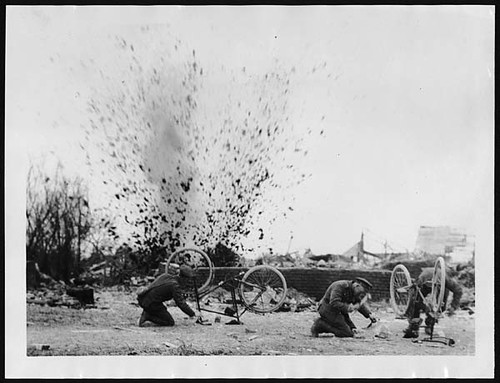
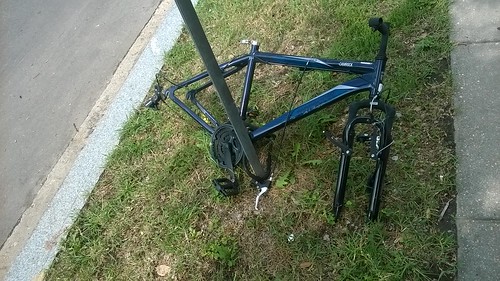

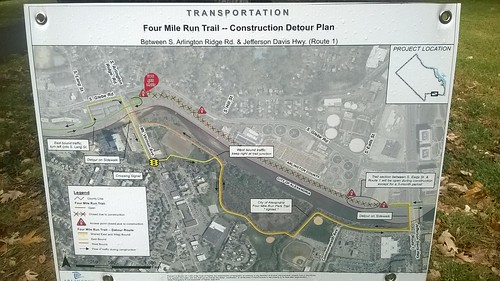


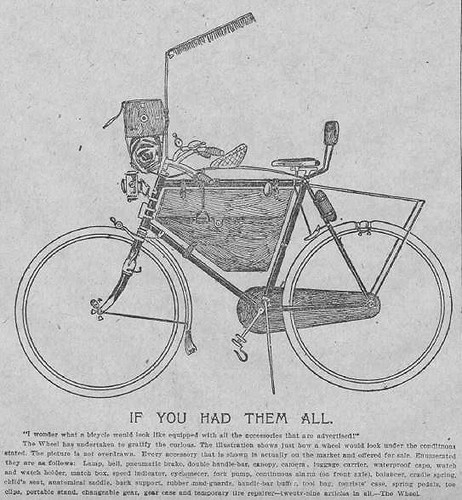

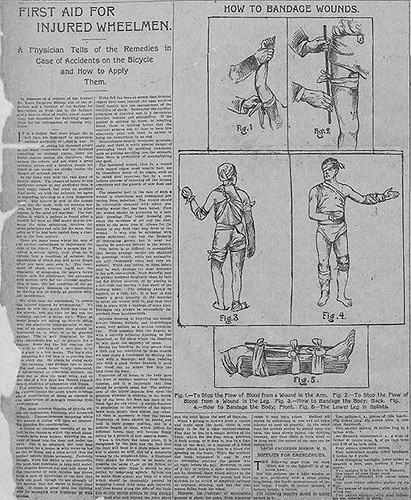

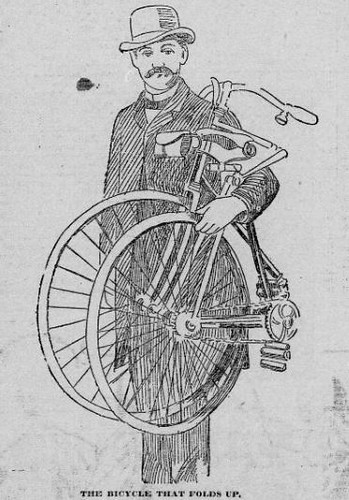

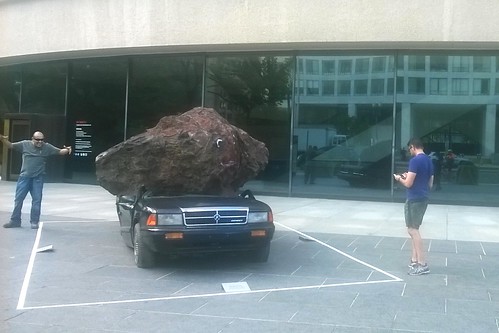
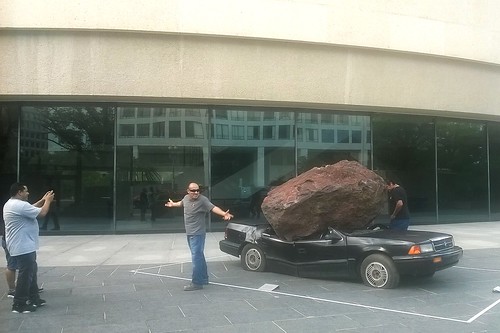

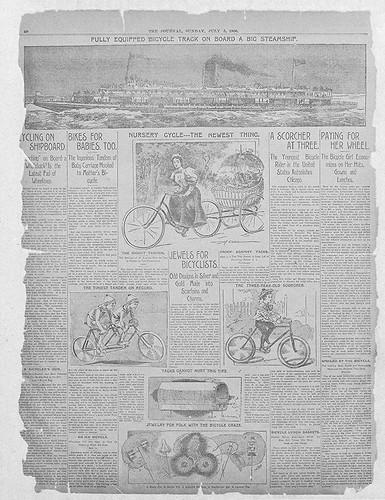


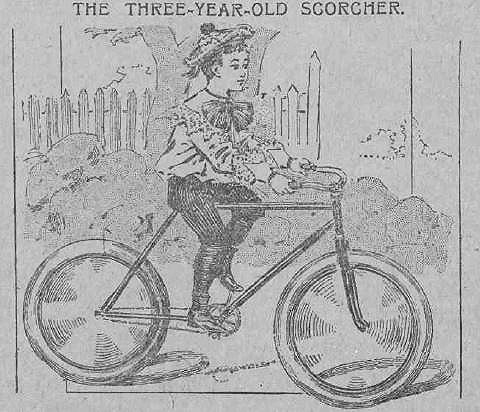
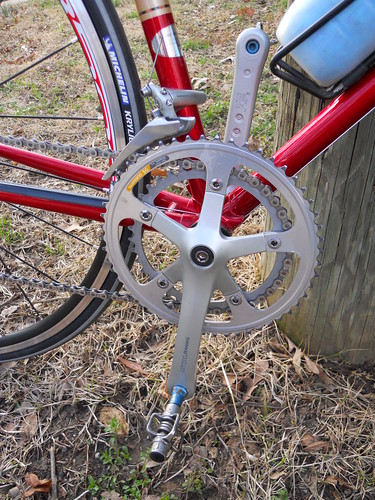



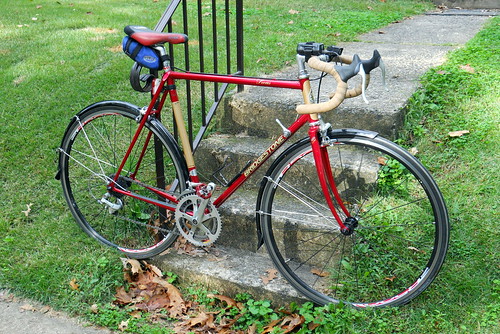


![Donaldson Bicycle Lithos [of 1896]](https://c4.staticflickr.com/9/8544/27877958203_363a76f689.jpg)

